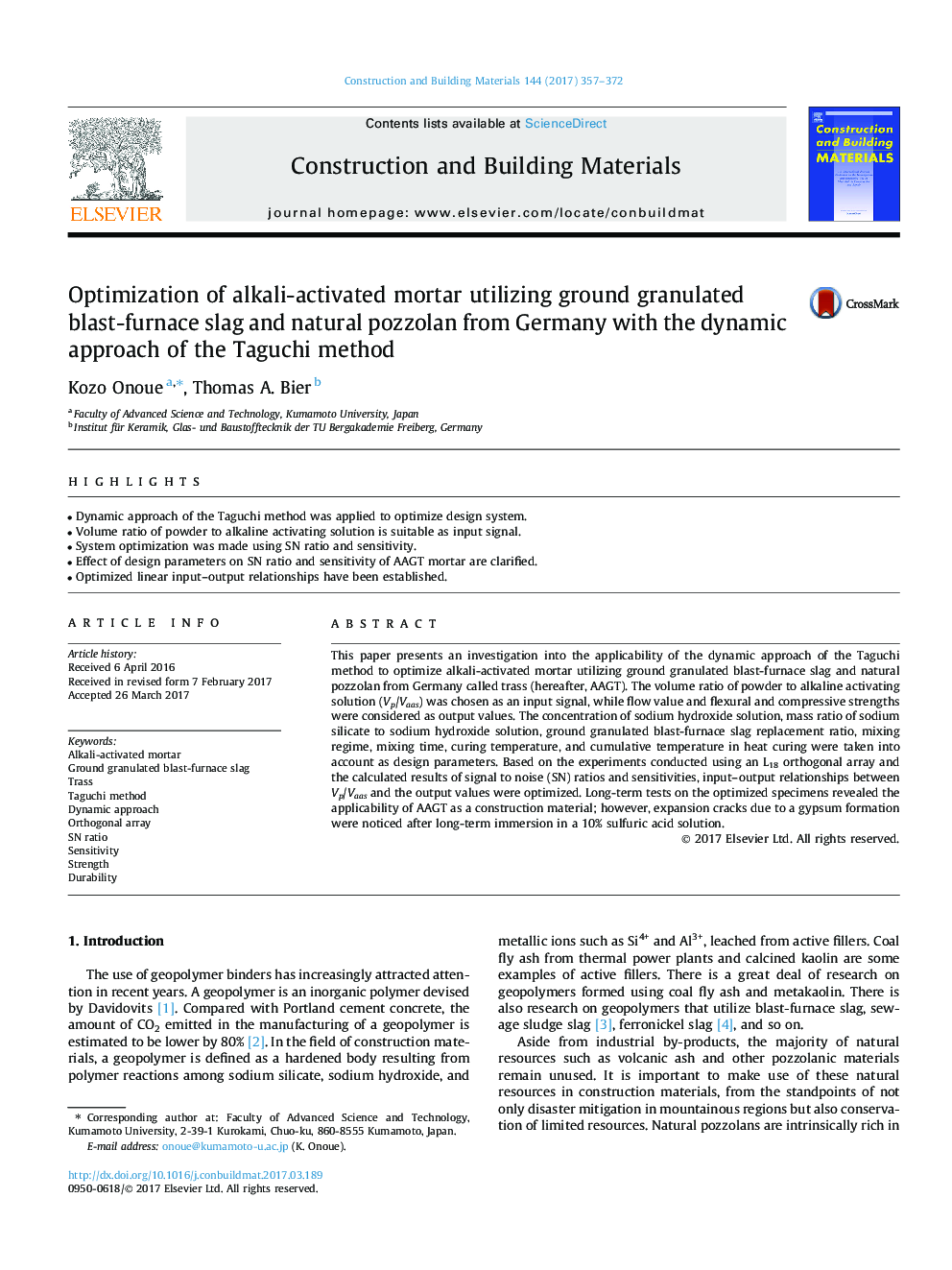| Article ID | Journal | Published Year | Pages | File Type |
|---|---|---|---|---|
| 4913173 | Construction and Building Materials | 2017 | 16 Pages |
Abstract
This paper presents an investigation into the applicability of the dynamic approach of the Taguchi method to optimize alkali-activated mortar utilizing ground granulated blast-furnace slag and natural pozzolan from Germany called trass (hereafter, AAGT). The volume ratio of powder to alkaline activating solution (Vp/Vaas) was chosen as an input signal, while flow value and flexural and compressive strengths were considered as output values. The concentration of sodium hydroxide solution, mass ratio of sodium silicate to sodium hydroxide solution, ground granulated blast-furnace slag replacement ratio, mixing regime, mixing time, curing temperature, and cumulative temperature in heat curing were taken into account as design parameters. Based on the experiments conducted using an L18 orthogonal array and the calculated results of signal to noise (SN) ratios and sensitivities, input-output relationships between Vp/Vaas and the output values were optimized. Long-term tests on the optimized specimens revealed the applicability of AAGT as a construction material; however, expansion cracks due to a gypsum formation were noticed after long-term immersion in a 10% sulfuric acid solution.
Keywords
Related Topics
Physical Sciences and Engineering
Engineering
Civil and Structural Engineering
Authors
Kozo Onoue, Thomas A. Bier,
